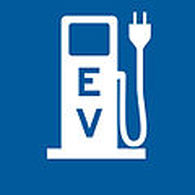
If you've read my other posts about EVs, you have a good idea of some of the limitations and concerns we've seen over the years with EVs. Most of these have been answered by the Bolt, but ultimately, with today's technologies, it turns out that the practical limitations for an EV are less about the car itself and its range, and more about charging. That said, I thought I'd dedicate this post to EV charging and whether today's infrastructure is sufficient to own an EV - in particular the Bolt - as your sole (or primary) vehicle.
First, a few facts about the Bolt:
The Bolt has an official range of 238 miles and an official MPGe (miles per gallon equivalent) of 130 miles per gallon. In terms of actual tested range over the nearly 4 months we've been driving the Bolt, it gets over 300 miles around town, around 210 miles at 70-75 mph, and we average around 260 miles in mixed highway and city driving.
So what about charging?
The Bolt's battery capacity is 60 kWh: sixty kilowatt hours. When you start driving an EV, you think in terms of kWH and kW (kilowatts) instead of gas tank volume and gallons of gas needed to fill it. Still, the idea is the same. EVs get a certain number of miles per kWh just like a gasoline-powered car gets a number of miles per gallon of gas. The battery capacity is like the gas tank.
Obviously, just as you get lower gas mileage going uphill in a conventional car, you get fewer miles per kWh going uphill in an EV. But in an EV, when you go downhill, you recharge the battery. That's like filling your tank as you drive. Also, EVs get better range around town than on the highway. For the ranges I mentioned above, we get over 5 miles/kWh around town, about 3.5 miles/kWh at faster highway speeds, and about 4.25 miles/kWh in mixed highway and city driving.
The Bolt accepts two types of charging interfaces: the J1772 plug, and the CCS Fast Charging plug. At 240 volts, the J1772 adapter will charge the Bolt at up to 7.8 kW (kilowatts) and a fully discharged battery will recharge in about 9 hours. The CCS Fast Charging interface accepts up to 80 kW, which theoretically means that you could fully charge an empty battery in about 45 minutes (60kWh/80kW = .75 hours). Unfortunately the reality here is a bit different. The battery's charging is not linear. It charges fastest when empty and slows as it nears full capacity. Also, as of today, there are no 80+ kW charging stations available for any cars other than Teslas. The best EV charging stations we've found are 50 kW and it takes about 80 minutes to charge the Bolt from 20% to 100%.
So what does this mean from a practical point of view?
We have no concerns on trips of 200 miles or so. We drive to our destination, and if it's on the high end of the range, we recharge partially or fully and drive back. We do regular trips of 175 miles each way. During our brief stays at our destinations (usually meetings, sometimes a nice meal), we leave the Bolt at a Fast Charging Station to charge for about 80 minutes, bringing it up to near 100%. When done with our meetings, we make our return trip, and end with more than 20% of the battery capacity remaining when we get home. In all, our 350-mile round trips take about 6 hours including charging time - not much different than in a gas-powered car - a gas car would have sat idle during our meetings anyway.
The reality is that most of our drives are much shorter - 100 miles each way or less. For these trips we don't even think about charging the car unless there happens to be an available charging station near our destination. And although we have a 240 volt charging station at home, we rarely use it. We get free charging at many places in Santa Cruz and have found that most cities offer free charging in their city parking lots. If we're near a free charging station and it's available, we plug in while shopping, dining, or seeing a movie.
Not counting the free charging, the cost of charging, using either our home charging station or paying for EVgo Fast Charging, is about 10 cents per kWh. At 4.25 miles per kWh, it costs us about $2.35 to drive 100 miles. Since the Bolt is essentially maintenance free (other than tires and washer fluid), it's much less expensive to operate that our Audi. With free charging factored in, the Bolt is incredibly cheap to drive.
But what about a really long trip?
Well, that's a bit more difficult. To be frank, Tesla has real advantages over the Bolt. But it's not the car. Sure, the Model S and Model X are nice luxury cars, but they don't meet my practical needs for carrying surfboards and sporting equipment and for parking in areas where a $100,000 car wouldn't last long. No, it's not about the car. It's about the charging network.
Tesla has built an extensive network of fast charging stations. Most of these charge at a whopping 120 kW. So, for a Telsa, after 3 or 4 hours on the road, you need to recharge for 30-45 minutes before continuing another 3 to 4 hours or so. Long distances in a Tesla are practical and a Tesla could easily be not only your primary vehicle, but your only car.
For non-Telsa vehicles, there are several private pay-to-charge networks, but none has the capacity of the Tesla network. Chargepoint has built a network that extends from the Mexican border to Canada with Fast Charging Stations every 50 miles or so. Unfortunately, almost all of these operate at only 25 kW, so running up Highway 5 at 70-75 mph, getting 3.5 miles per kWh, an hour of charging would get you at most 85 miles. It's not terribly practical to charge for an hour to drive a bit over an hour. Of course if you want to make overnight stops, or if you have places you want to visit along the way, you could make this work for medium+ distance trips.
The other network we use is EVgo. EVgo is expanding their network of 50 kW charging stations but they don't have many on Highway 5. There are quite a few along Highway 80 and along Highway 101. Longer trips along these corridors are somewhat more practical, but still not what you're used to in a gas-powered car. You'd be charging an hour to get 170 miles. We've planned a trip to Oregon in the Bolt this summer and it looks like, using the 25 kW Chargepoint stations, it will take us about three hours longer than in our Audi.
So, for now, unless you have a Tesla, a 1000-mile or longer trip in an EV would mean a lot more stops.
The good news is that charging infrastructure is changing fast. As part of its settlement for the 'dieselgate scandal', VW is building an extensive network of very fast charging EV stations. They, along with other auto manufacturers, have already begun rolling out 350 kW stations in Europe. In the States, they've committed to doing the same beginning this year.
Locally, EVgo has just installed a 150 kW experimental station in Fremont. It theoretically has the capacity to go up to 350 kW.
So, it looks like over the coming years, the charging infrastructure will improve to the point where you can have a non-Tesla as your only vehicle - 150 kW charging will let you charge your car almost as fast as you could fill up at a gas pump. 350 kW will be just as fast if not faster, once cars have the capacity to accept that rate of charging.
For us, with its great range, Fast Charging, and fun to drive features, the Bolt has become our Primary Vehicle, covering a good 98% of our trips. But because we periodically do very long trips (over 600 miles), until the charging infrastructure improves, the Bolt won't be our only vehicle.


 RSS Feed
RSS Feed